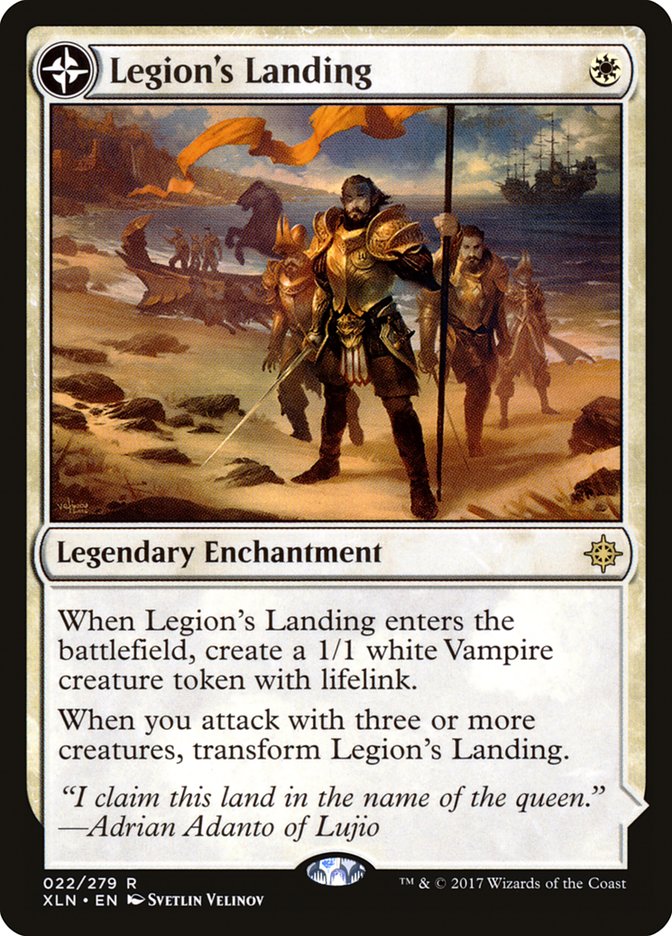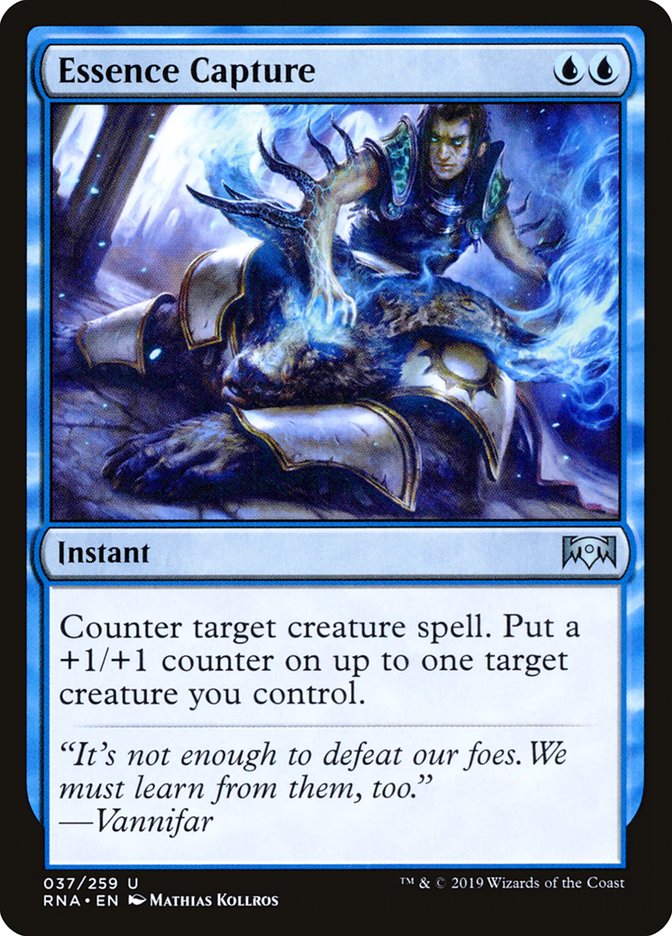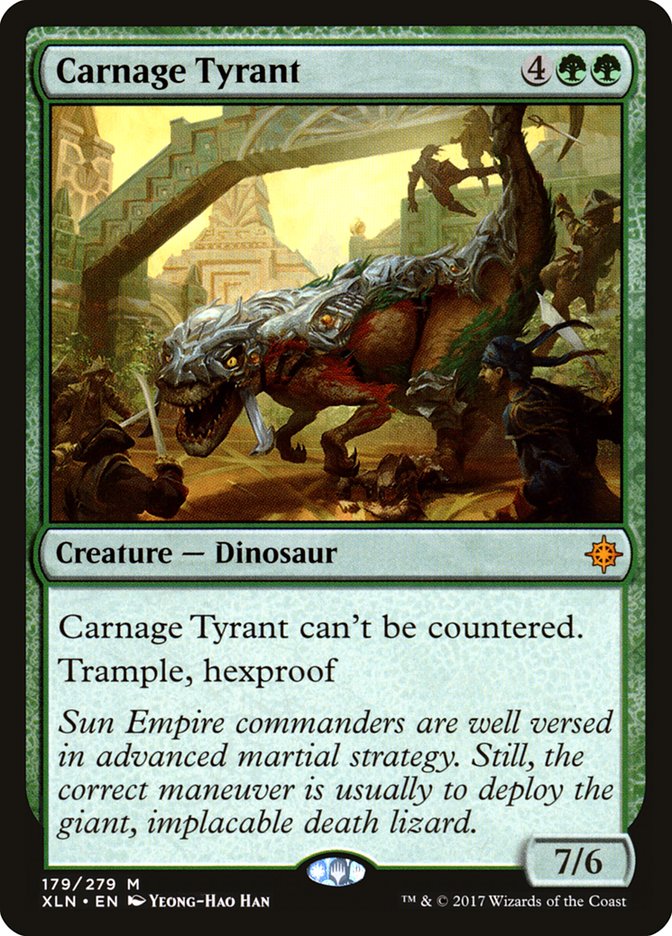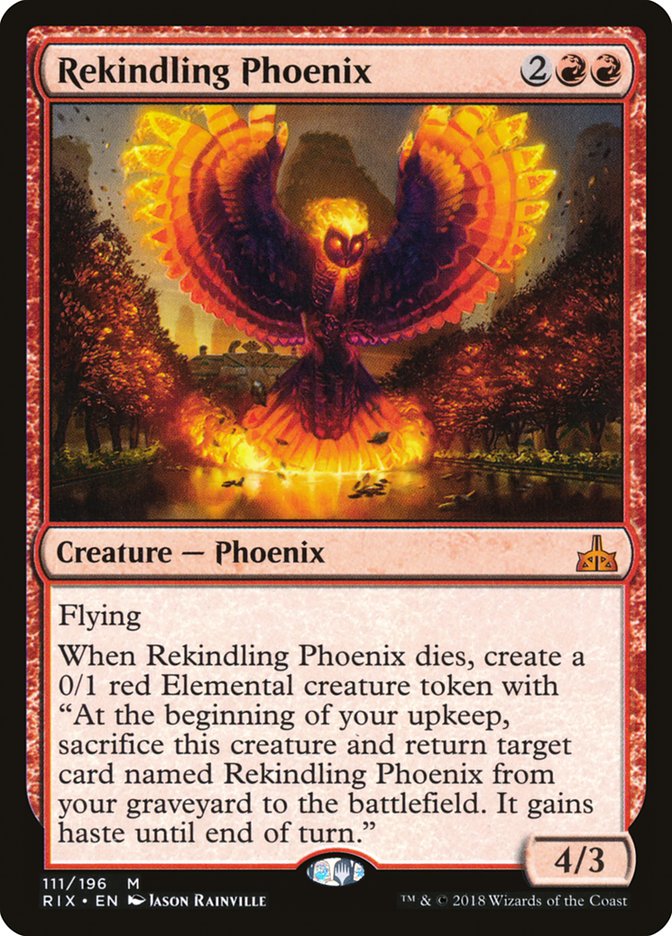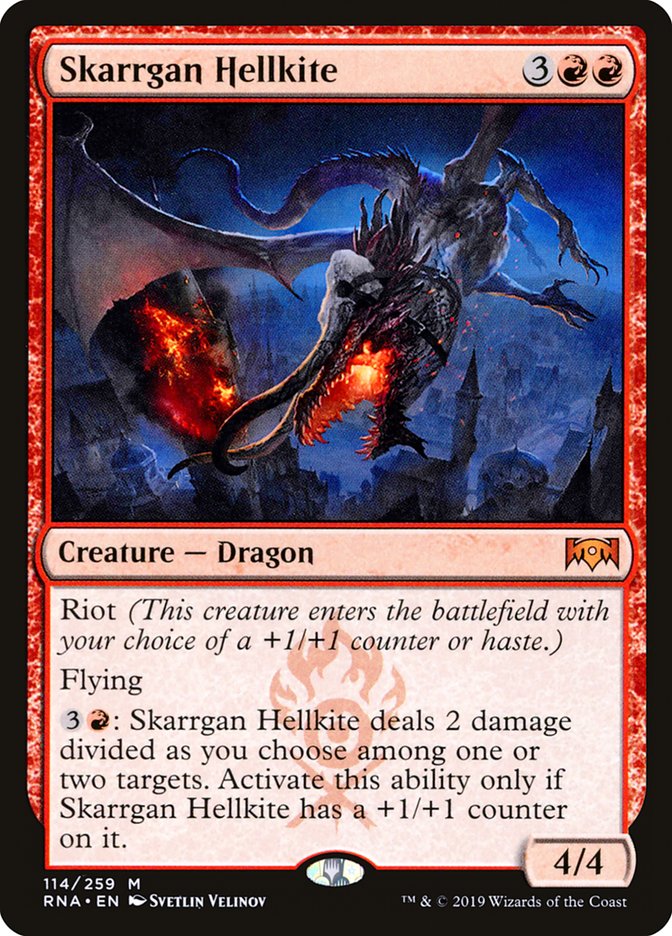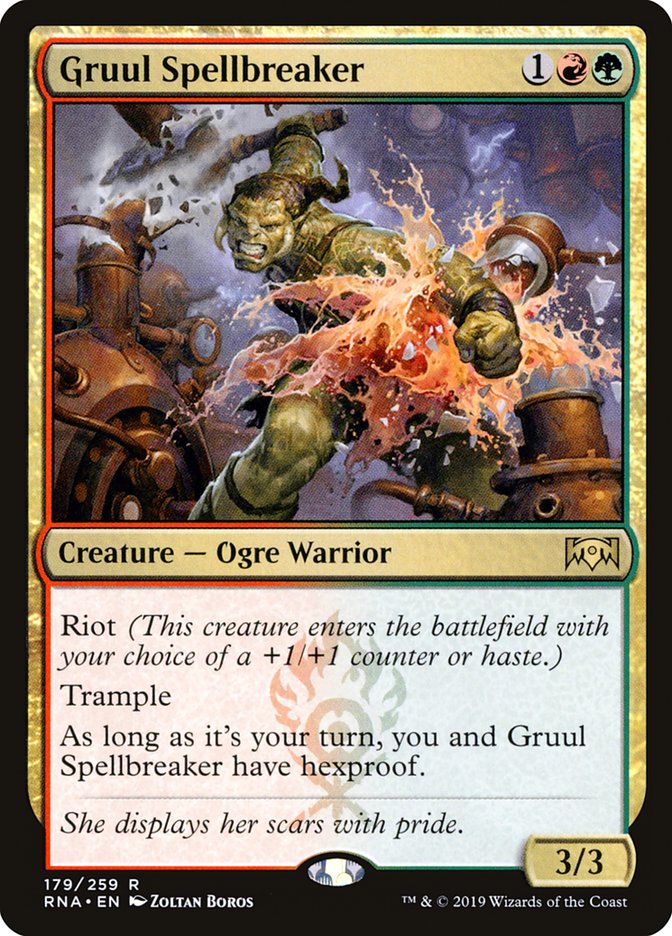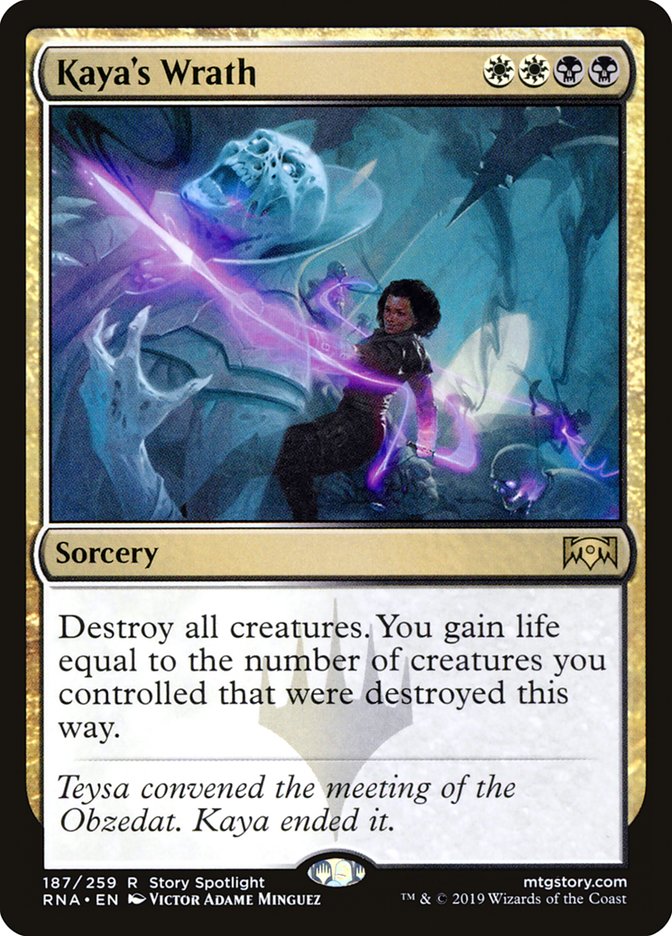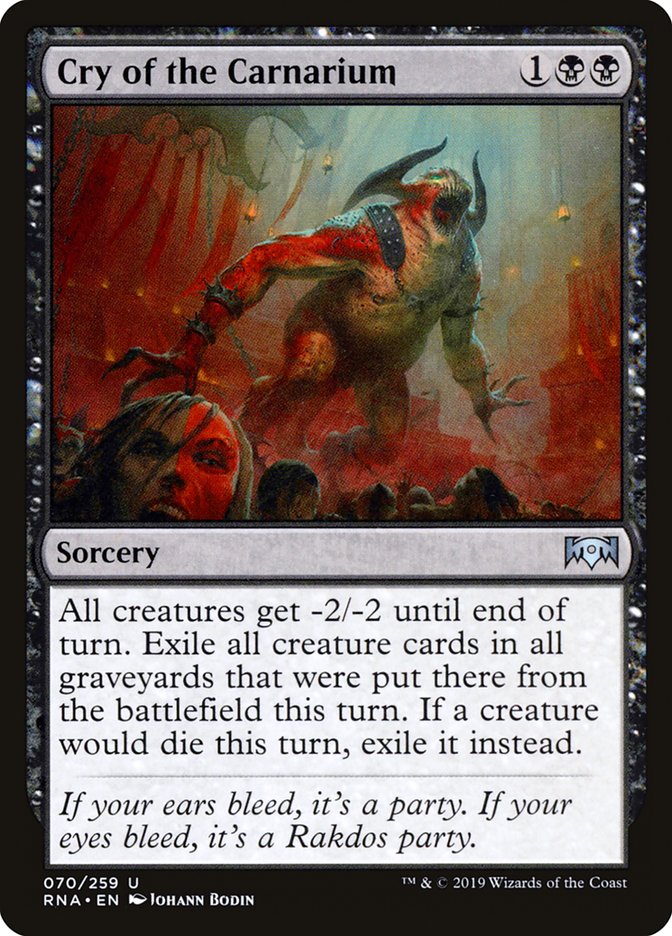By the time you read these words, I will already be in Boston for the Mythic Invitational. As you might expect, I have spent the last few weeks endlessly testing the much-maligned format known as best-of-one.
It turns out that it’s possible to get me to play any format – all you must do is offer a large cash incentive.
Like many of those competing in this event, I started by throwing out everything I knew about Standard and attempting to understand what was happening from the ground up.
Deck Selection and Matchup Analysis
If you get 100 competitive Magic players in a room and ask them how to best select a deck for an unknown metagame, you will receive 200 different answers. Concepts like free wins, consistency, resiliency to hate, and baseline power level will all get tossed around in such discussions. I think virtually all such concepts are irrelevant most of the time.
To illustrate why, let us imagine there existed a computer program made to help select Magic decks. This program is fed in every deck’s matchup against every other deck and how popular each deck is expected to be for an upcoming tournament. The numbers it is given are not perfect, but they are the best available at the time. The program outputs the weighted average of the win percentages for each deck. That is, if Mono-Red Aggro is twice as popular as Mono-Blue Aggro, the algorithm considers a potential deck’s matchup against Mono-Red to be twice as important as that deck’s matchup against Mono-Blue.
In my opinion, the deck with the best weighted average would be the best deck for the weekend. To make its calculation, the program doesn’t need to know which decks have free wins or how consistent they are, whatever that means. The deck that is maximally favored against the field simply is the best deck, presupposing that the predicted metagame is roughly accurate.
What I’m getting at here is this: when selecting a deck for a given tournament, the main factor that matters is how that deck matches up against the expected field, since the other concepts such as resiliency, power level, and so forth are actually just trying to get at this indirectly, and wins are what count on the day of the tournament. Thus, my focus when dealing with an unfamiliar format is to try to understand the matchups of most or all the popular decks and use that knowledge to both try to find edges and to inform my selection of the deck that will fare best in any given field.
The Pillars of the Format
Creatures (20)
- 4 Fanatical Firebrand
- 4 Ghitu Lavarunner
- 4 Goblin Chainwhirler
- 4 Viashino Pyromancer
- 4 Runaway Steam-Kin
Lands (18)
- 18 Mountain
Spells (22)

Planeswalkers (5)
Lands (26)
Spells (29)

Any serious best-of-one Standard player would tell you that the most popular decks on the ladder are undoubtedly Mono-Red Aggro and Esper Control. These decks each exploit one aspect of the format to the maximum extent possible. Mono-Red exploits the hand optimization algorithm to consistently draw enough lands to be functional in the early-game while topdecking the lethal burn spell every time. Esper Control capitalizes on the lack of sideboarding to blank opposing creature removal and avoid cards like Duress that attack its strategy more effectively.
In my experience, nothing approaches the popularity of these two decks. That said, things are by no means that one-dimensional. Mono-Blue Aggro and Mono-White Aggro both demonstrate different monocolored hand algorithm exploits, with slightly different matchup profiles. Gruul Midrange utilizes Goblin Chainwhirler and a suite of value creatures to survive Mono-Red while going toe to toe with Esper in the long-game. Rounding out the format, Sultai-style decks are about evenly split between Golgari lists and more traditional versions with some blue for Hydroid Krasis. While there are some nuanced differences between these two decks, I will consider them to be the same deck for the purposes of this analysis.
Mono-Red Aggro
I think Mono-Red is the most overhyped deck in best-of-one Standard. I’m not saying the deck is unplayable or bad by any means, but I don’t think it’s particularly impressive either. The hivemind will tell you that this deck is good primarily because of its strength in aggro mirrors. In my experience, the deck is favored there, but the matchups are far too close for comfort. Too often, a fast Venerated Loxodon or Tempest Djinn draw defeats even solid-looking Red draws. While exploiting the hand algorithm allows the deck to hit its early land drops without flooding, it also lowers the frequency with which it casts Goblin Chainwhirler on curve. That’s a big deal, as casting the Goblin on Turn 3 is often the difference between winning and losing.
On the other hand, my experience is that Mono-Red struggles to beat any of the midrange green decks. Gruul is fairly good at utilizing cheap interaction to keep its life total high before turning the corner quickly with burn-immune threats like Rekindling Phoenix, Gruul Spellbreaker, and Skarrgan Hellkite. Golgari leans hard on sticking a Wildgrowth Walker, but with the amount of recursion available to it, that strategy tends to work more often than not.
- Strong Against: Mono-Blue Aggro, Mono-White Aggro
- Close Against: Esper Control
- Weak Against: Gruul Midrange, Golgari Midrange
Mono-White Aggro
My beloved Mono-White unfortunately gets a lot weaker in the transition from best-of-three Standard to best-of-one Standard. While the hand algorithm allows it to play a huge number of one-drops, the lack of Simic Nexus for it to beat up on really hurts, as the deck’s only remaining prey is Mono-Blue. Against Esper, transforming a Legion’s Landing usually ends the game immediately and this happens surprisingly often, as the control deck cannot realistically mulligan every hand without a two-mana interactive spell. However, Mono-White loses most games in which Legion’s Landing does not transform and Esper decks routinely have two or even three of the back-breaking Cry of the Carnarium maindeck.
The Gruul Midrange matchup really hinges on whether your opponent is playing a red version of the deck with Goblin Chainwhirler. If they aren’t, I think Mono-White is a substantial favorite, but if they are, things start to get really close. In addition to its devastating sweeper effect, The Chainwhirler helps to overload White’s Conclave Tribunals, which are already heavily taxed by Rekindling Phoenix and Skarrgan Hellkite.
It is to my great sorrow that I will not be playing Mono-White at the Mythic Invitational.
- Strong Against: Mono-Blue Aggro
- Close Against: Esper Control, Gruul Midrange
- Weak Against: Golgari Midrange, Mono-Red Aggro
Mono-Blue Aggro
The biggest issue I’ve found with Mono-Blue Aggro in best-of-one Standard is finding the right balance in the counterspell suite. Playing large numbers of Essence Capture helps shore up all the deck’s individual weaknesses by neutralizing key threats like Goblin Chainwhirler, Venerated Loxodon, and Rekindling Phoenix. Unfortunately, Essence Capture is an utter blank against Esper Control. Typically, the Esper matchup comes down to a desperate fight to eke out the last few points before the control deck finally resolves a stabilizing spell. Games like that are won on small margins, so drawing a single dead card can mean the difference between victory and defeat.
Overall, I think Mono-Blue can be tuned a lot, but it’s always going to be even or worse against most of the field, and that’s simply not good enough.
- Strong Against: Golgari Midrange
- Close Against: Esper Control
- Weak Against: Gruul Midrange, Mono-Red, Mono-White
Golgari-Based Midrange
As far as I can tell, every writer who has discussed best-of-one Standard hates this deck and I honestly have no idea why. The biggest strike against it is that the deck is more or less forced to play cards like Ravenous Chupacabra, Hostage Taker, and Cast Down that are blank against Esper. While that is certainly unfortunate, I think that the best builds of the deck shave these cards to the bare minimum. In addition, Carnage Tyrant is extremely potent against Esper players who often have only three copies of Kaya’s Wrath because the high number of aggressive decks forces them to spend some of their sweeper slots on Cry of the Carnarium. The Golgari deck is also often capable of recurring the death lizard even if the Esper player does have a Wrath.
On the midrange side, you have three basic goals in the matchup:
1. Find Carnage Tyrant.
2. Force a Wrath without committing Tyrant.
3. Deploy Tyrant and recur it as necessary until it devours your opponent.
If your list does not contain Carnage Tyrant, I think you’re noticeably unfavored against Esper and my main recommendation would be to change your list.
- Strong Against: Mono-White Aggro, Mono-Red Aggro, Gruul Midrange
- Close Against: Esper Control
- Weak Against: Mono-Blue Aggro
Gruul Midrange
I think Gruul Midrange is a real sleeper and is among the best decks in the entire format. Its creature suite is primarily designed to make Esper’s life hard. Rekindling Phoenix lives through Kaya’s Wrath, Skarrgan Hellkite punishes them for tapping out, and Gruul Spellbreaker wastes their mana when they hold some up. But the icing on the cake is Growth-Chamber Guardian. This card singlehandedly takes over late-games against Esper and will usually force them into a corner in a variety of ways if it ever resolves.
My preferred build is heavily red, utilizing Unclaimed Territory naming Warrior to make the mana functional. This allows the deck to play Goblin Chainwhirler, which shores up aggressive matchups. Rekindling Phoenix also does surprisingly good work against these decks by stopping Mono-Blue cold if they ever tap out and being a tenacious blocker against Mono-Red and Mono-White.
The only real problem with Gruul is that it struggles to ever beat a Wildgrowth Walker or Hydroid Krasis, and Golgari can almost always leverage its removal to drag the game out long enough to utilize those cards.
- Strong Against: Mono-Red Aggro, Esper Control, Mono-Blue Aggro
- Close Against: Mono-White Aggro
- Weak Against: Golgari Midrange
Esper Control
Esper Control is the Jund deck of best-of-one Standard. By default, it’s close against the entire field, but there are a ton of small choices that allow its pilots to tune their lists to any specific metagame. However, there’s no such thing as a free lunch and nearly every change you make to improve one matchup hurts another.
For example, you can choose to play four copies of Kaya’s Wrath and one copy of Cry of the Carnarium instead of the industry standard 3-2 split. If you do, you’ll improve against the larger creatures of green midrange decks but noticeably worsen your deck against Mono-Red and Mono-White. You could also make your list better in the mirror by loading up on cheap countermagic like Syncopate and Negate, but if you do, you’ll need to remove cheap spot removal that is better against the rest of the field. You can crush the monocolored aggro decks into the ground by playing multiples of Kaya, Orzhov Usurper and large numbers of Moment of Craving and Cry of Contrition, but the lower-impact spells you’re adding will hurt you against grindy midrange decks and in the mirror.
Esper is one of the most warping decks in the entire format, and with good reason. If you predict the metagame right on any given day, the deck can feel broken. But predict it wrong and the only thing that is likely to get broken is your rank.
- Strong Against: Whatever you build it to beat
- Close Against: The field
- Weak Against: Whatever matchup you sacrifice
The Mythic Invitational
Somehow, some way, Magic has a million-dollar tournament with only 64 invitees. Even more shockingly, I am invited. Given the strength of the opposition, I doubt that I will have a particularly good finish. But I will try my absolute best to upset some MPL players over the course of the tournament.
Duo Standard has a few quirks compared to traditional best-of-one Standard, but those quirks only make understanding the component matchups more important. I have tried my best to explain the nuances of every major deck and every major matchup. I hope this knowledge serves you well, and I hope it’s enough. If push comes to shove, I will resort to the strategy that won me the Pro Tour…
Run hotter than the sun and hope the opposition mulligans to four!



